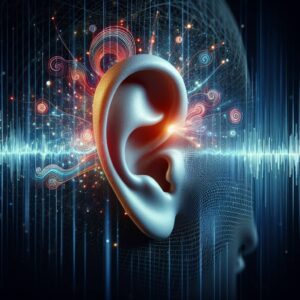Introduction
A healthy erection is a crucial part of sexual function for men. However, when an erection becomes painful, it can be a cause for concern. Painful erection, also known as priapism, are not normal and require medical attention. This article explores the various causes of painful erections, treatment options, and when to seek immediate medical help.
Distinguishing Painful Erections from Normal Erections
A normal erection occurs due to increased blood flow to the penis during sexual arousal. This blood flow fills spongy tissues within the penis, causing it to stiffen and enlarge. Once arousal subsides, blood flow returns to normal, and the erection goes away.
Painful erections, on the other hand, are long-lasting and typically not related to sexual stimulation. They can be persistent, lasting for hours or even days, and are accompanied by significant pain. This pain can be felt throughout the penis and can range from a dull ache to a sharp, throbbing sensation.
Recognizing the Different Types of Priapism
There are two main types of priapism:
- Ischemic Priapism: This is the most concerning type and is a medical emergency. In ischemic priapism, blood flow enters the penis but fails to drain properly. This can lead to tissue damage and permanent erectile dysfunction if not treated promptly.
- Non-ischemic Priapism: This type is less severe and occurs when blood flow to the penis is normal, but the mechanism for blood drainage is malfunctioning. It is often less painful than ischemic priapism but can still be uncomfortable.
Causes of Painful Erection
Several factors can contribute to painful erection. Here’s a breakdown of some common causes:
- Medical Conditions: Certain underlying medical conditions can affect blood flow to the penis, leading to priapism. These include sickle cell disease, leukemia, and some neurological disorders.
- Medications: Blood-thinning medications, antidepressants, certain medications for high blood pressure, and some recreational drugs like cocaine and marijuana can increase the risk of priapism.
- Injuries: Trauma to the penis, such as from a fracture or forceful bending, can damage blood vessels and cause painful erections.
- Infections: Infections in the penis or urinary tract can cause inflammation and contribute to priapism.
- Peyronie’s Disease: This condition involves the formation of scar tissue within the penis, which can cause pain during erections and curvature of the penis.
When to Seek Medical Attention
If you experience a painful erection that lasts longer than four hours, it’s crucial to seek immediate medical attention. Early diagnosis and treatment are essential to prevent permanent damage to the penis.
Here are some additional signs that warrant a visit to the doctor:
- Bruising or discoloration of the penis
- Numbness in the penis
- Difficulty urinating
Treatment Options for Painful Erection
The treatment for painful erections depends on the underlying cause. For ischemic priapism, the goal is to restore normal blood flow to the penis as soon as possible. This may involve:
- Aspiration: A needle is inserted into the penis to remove some of the trapped blood.
- Medication: Medications may be used to narrow blood vessels and promote drainage.
- Surgery: In severe cases, surgery may be necessary to correct blood flow problems.
For non-ischemic priapism, treatment may involve:
- Cooling the penis: Applying ice packs to the groin area can help reduce blood flow.
- Medication: Medications like pseudoephedrine (Sudafed) may help contract blood vessels and promote drainage.
In some cases, addressing the underlying cause of priapism, such as stopping a medication or treating an infection, may be sufficient to resolve the issue.
Preventing Painful Erections
While not always possible, there are steps you can take to reduce your risk of painful erections:
- Maintain a healthy lifestyle: Regular exercise, a balanced diet, and managing stress levels can improve overall health and blood flow.
- Talk to your doctor about medications: Discuss any medications you are taking that could increase the risk of priapism.
- Seek prompt treatment for infections: Untreated infections can contribute to various complications, including priapism.
- Practice safe sex: Protect yourself from sexually transmitted infections (STIs) that can cause inflammation and other complications.
Conclusion
Painful erections are a medical concern that should not be ignored. Early diagnosis and treatment are crucial to prevent permanent damage. If you experience a painful erection, don’t hesitate to seek immediate medical attention. By understanding the causes and treatment options for painful erections, you can take steps to protect your sexual health.


